Quick Start Guides for DAWs » Quick Start Guides for Logic Pro » Real-time Processing
- Instantiating RePitch
- Removing RePitch
- User Interface
- Resizing the RePitch window
- Select a Scale
- Applying a Macro
- Capture Audio (realtime)
- Snap Notes to Measured Scale
- How to choose Manual Editing
- Switching Macros
- Rendering Your Audio
Overview
In this Quick Start Guide, we will discuss a basic workflow for Logic Pro using the RealTime AU version of RePitch Standard.
To use this section, make sure that:
- Your DAW is up to date.
- Your RePitch plugin version is up to date.
- If the ARA workflow is available to you, we recommend using the ARA version of the plugin discussed here.
We will work with a generic track called 'Lead Vocal', but this workflow can be followed with any track in your DAW containing audio that you would like to process.

Instantiating RePitch
To add RePitch as a Real Time plugin in Logic, with your track selected, click an empty 'Audio FX' slot in the left side track panel as circled in red below.

Select 'Audio Units -> Synchro Arts -> RePitch Standard AU -> Mono' from the dropdown as shown below.
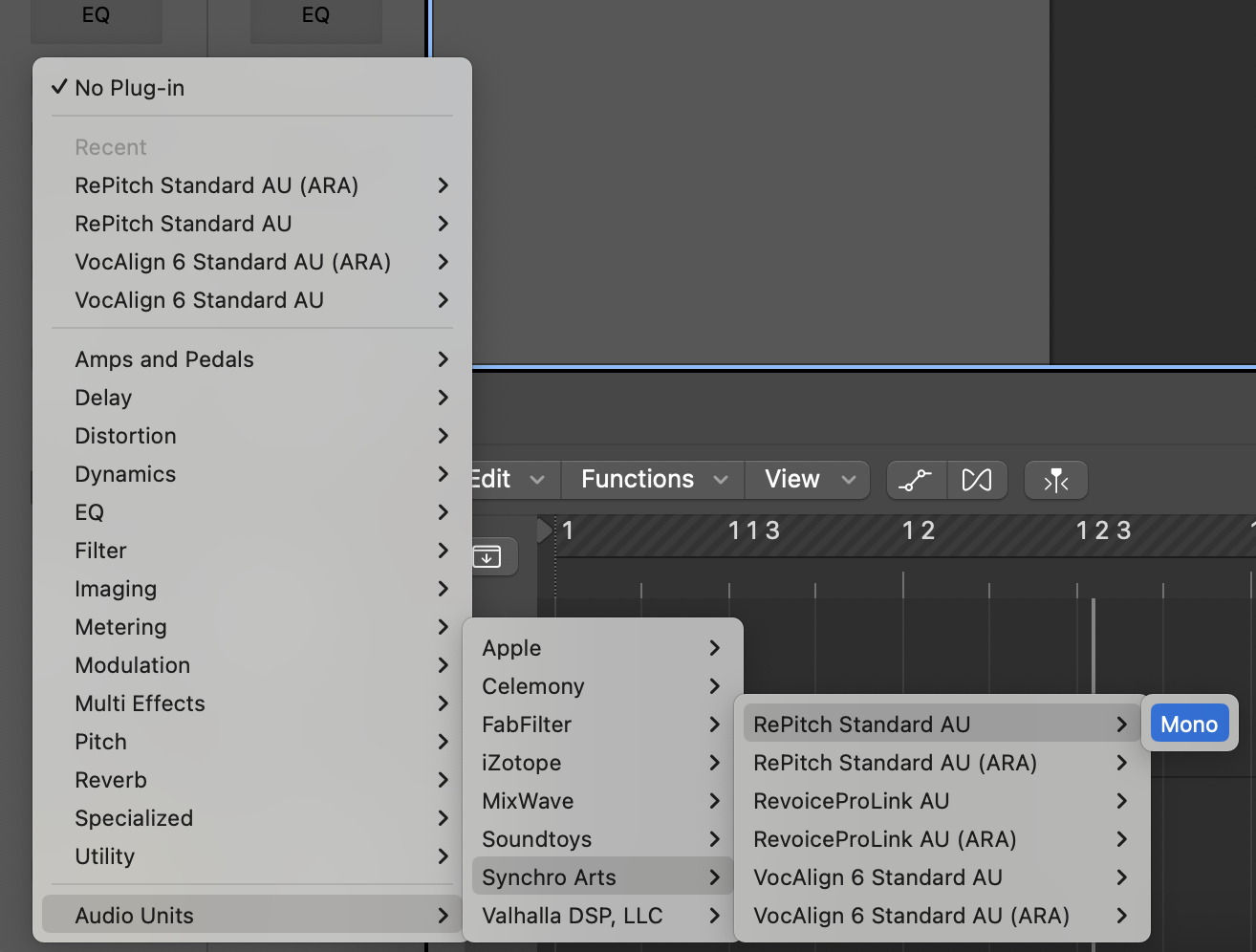
Removing RePitch
To remove RePitch, hover over the RePitch audio effect and click the rightmost side where the small up/down arrows are, as circled in the below image. Select 'No Plug-in' from the menu that opens.
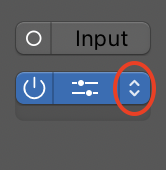 ... then ...
... then ... 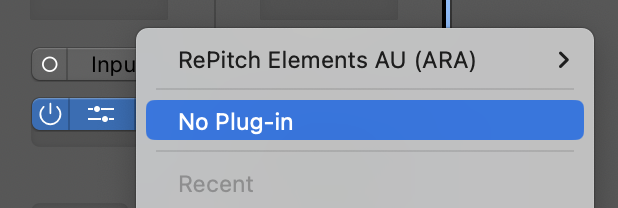
User Interface
Once RePitch has been added, the plugin window will automatically open as shown below.
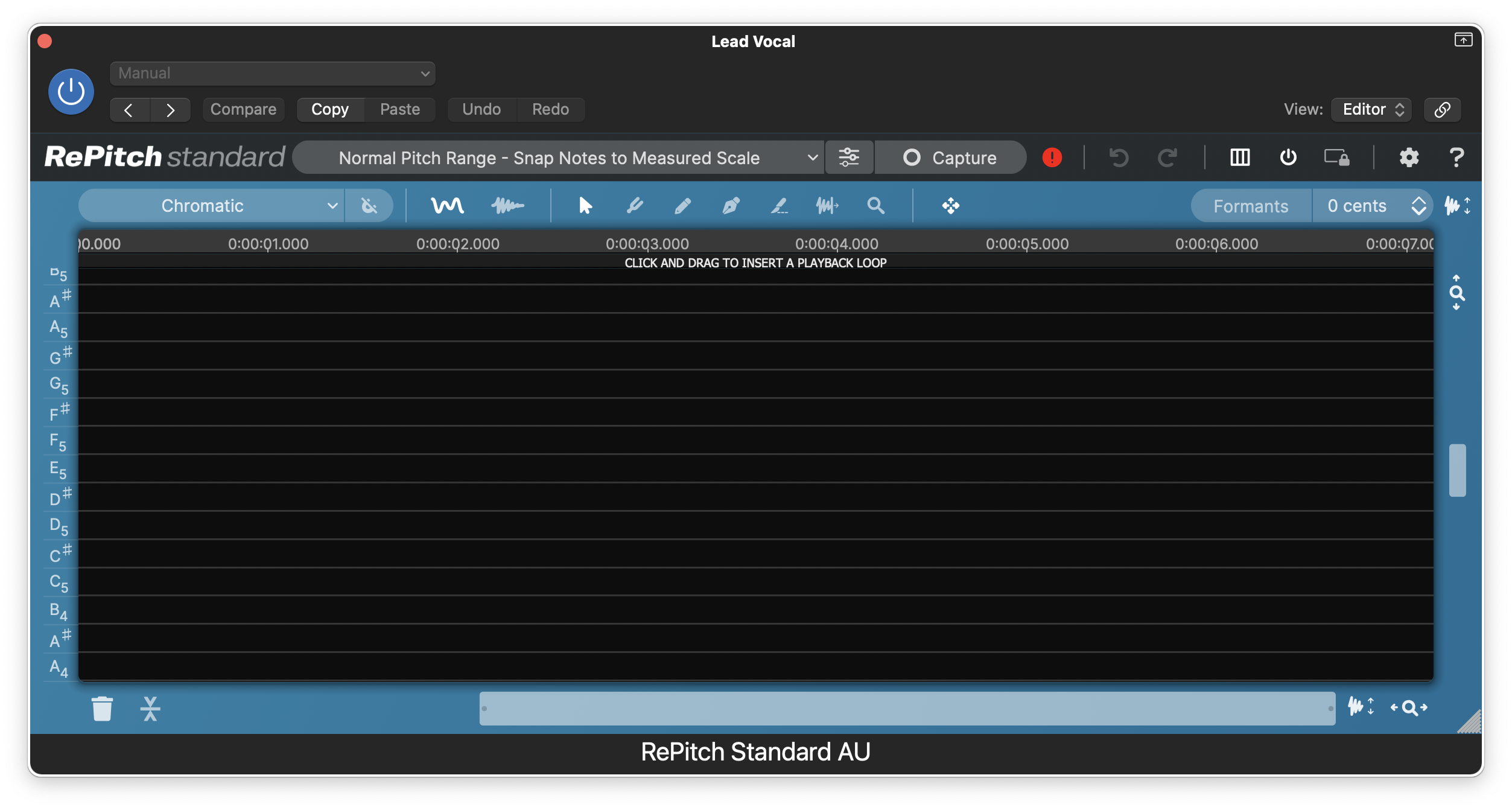
Resizing the RePitch window
You can resize the RePitch window to almost any size by dragging the corners or edges of the plug-in window.
Process Your Audio
In order to process our audio, we will select a Scale and a Macro. These options define how RePitch will process our audio. There are Macros available for many common use-cases. Users can also create and save their own Macros. Macros are described further in this section.
Select a Scale
In order to quickly tune our selected vocal, we will use one of RePitch's built in Macros.
First, we will select the Chromatic scale from the Scale menu in RePitch.
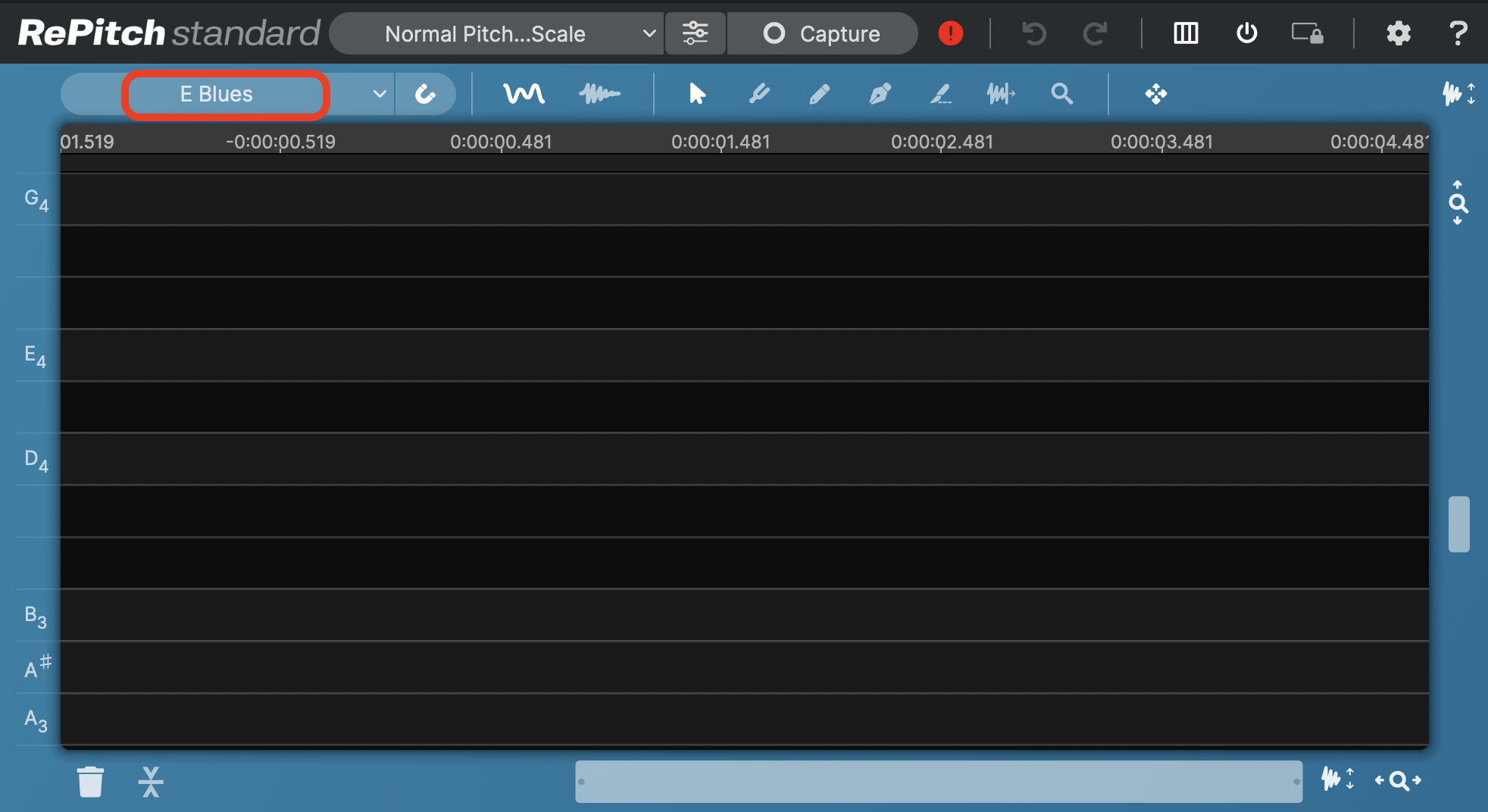
Clicking the drop down menu will show our current available scales. You can select the 'Scales...' item to add scales to this list later. For now, choose Chromatic.
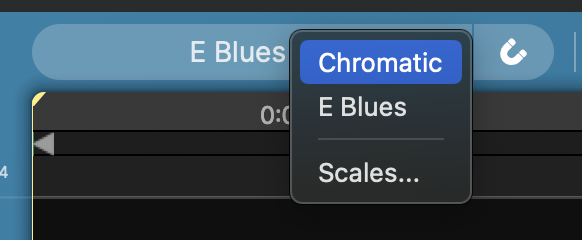
Applying a Macro
Next, select a Macro from the Macro drop down menu. The Macro menu is at the top of the RePitch plugin window, highlighted below in red.

From the drop down, we'll select 'Normal Pitch Range > Snap Notes to Selected Scale'. This will tune our audio to the nearest chromatic pitch.

Capture Audio (realtime)
In the real-time versions of RePitch, we need to Capture our audio before we can work with it. Before Capturing your audio, we suggest setting up a loop around the audio that you would like to capture. This will make it easier to capture the audio, and to listen back to the results after processing is applied.
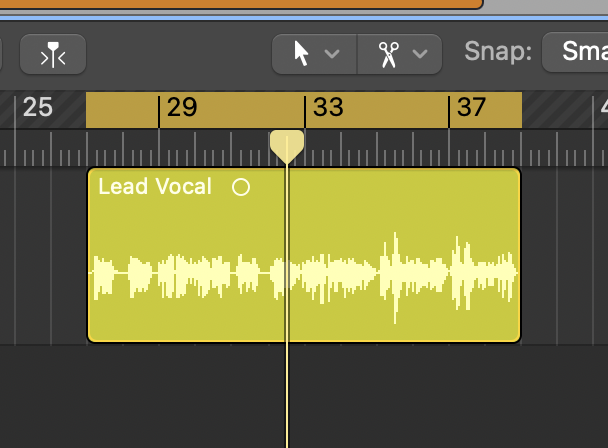
To begin the Capture process, we will first click the Capture button at the top of the user interface to arm RePitch for recording. The Capture button is indicated in the below image by a red arrow.

The Capture button will now change to a red square and say 'Stop'. This indicates that RePitch is armed and ready to capture any incoming audio.

We can now press our Spacebar to start playback in our DAW. RePitch will begin capturing any incoming audio, shown by the grey waveform that is drawn in behind the advancing playback marker (the vertical yellow line). Keep playing the audio until everything you would like to work with has been captured.
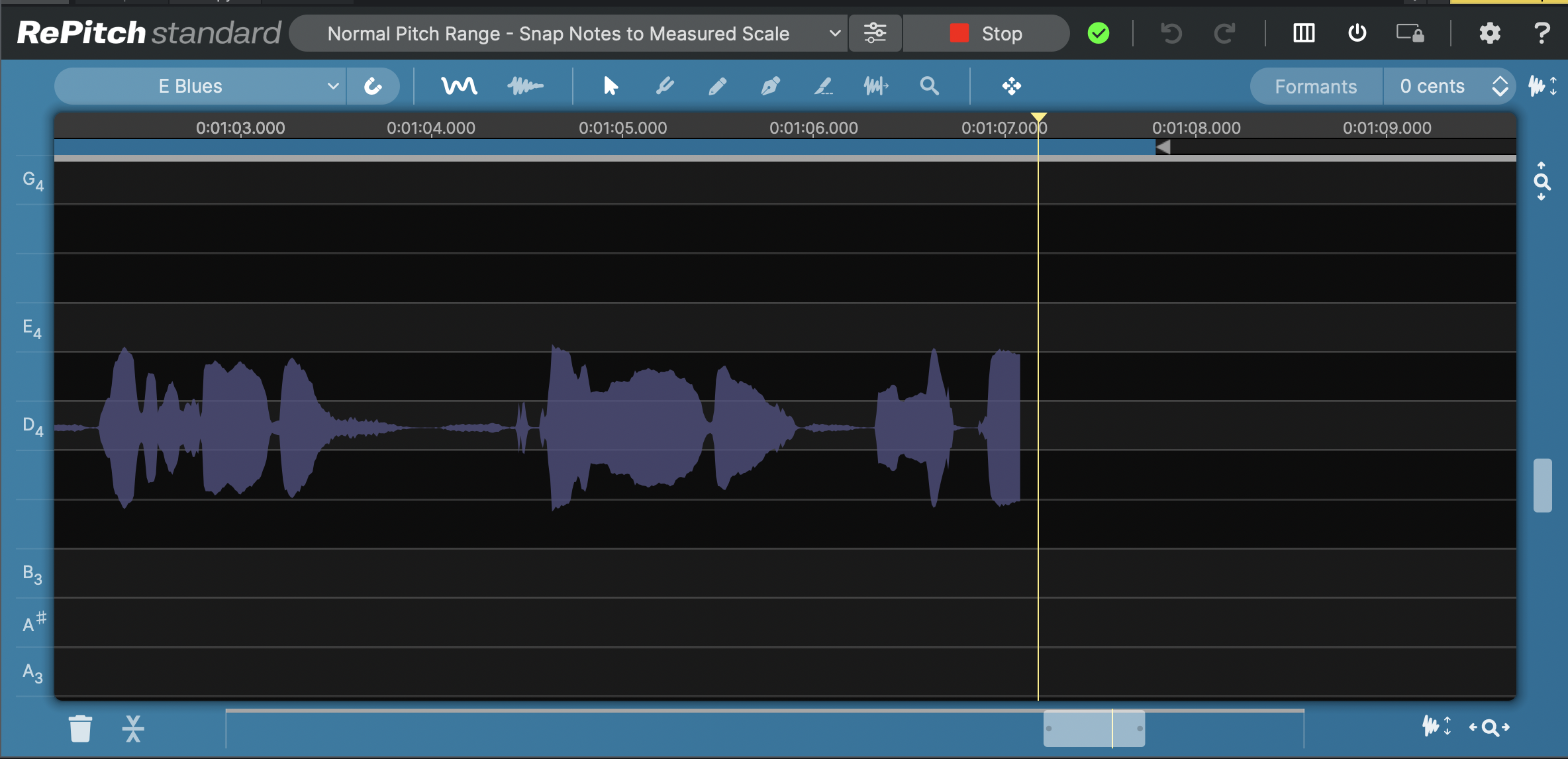
Once your audio has played back and been captured, press the spacebar again to stop playback. RePitch will immediately apply the selected Scale and Macro processing to our audio clip.
In the picture below, RePitch has processed the captured audio based on the currently selected Macro, so the blue note blocks are shown automatically centered (tuned) in the Note Lanes of the Chromatic Scale.
The white lines show the new pitch pattern and the faint grey pitch lines show the original pitch.
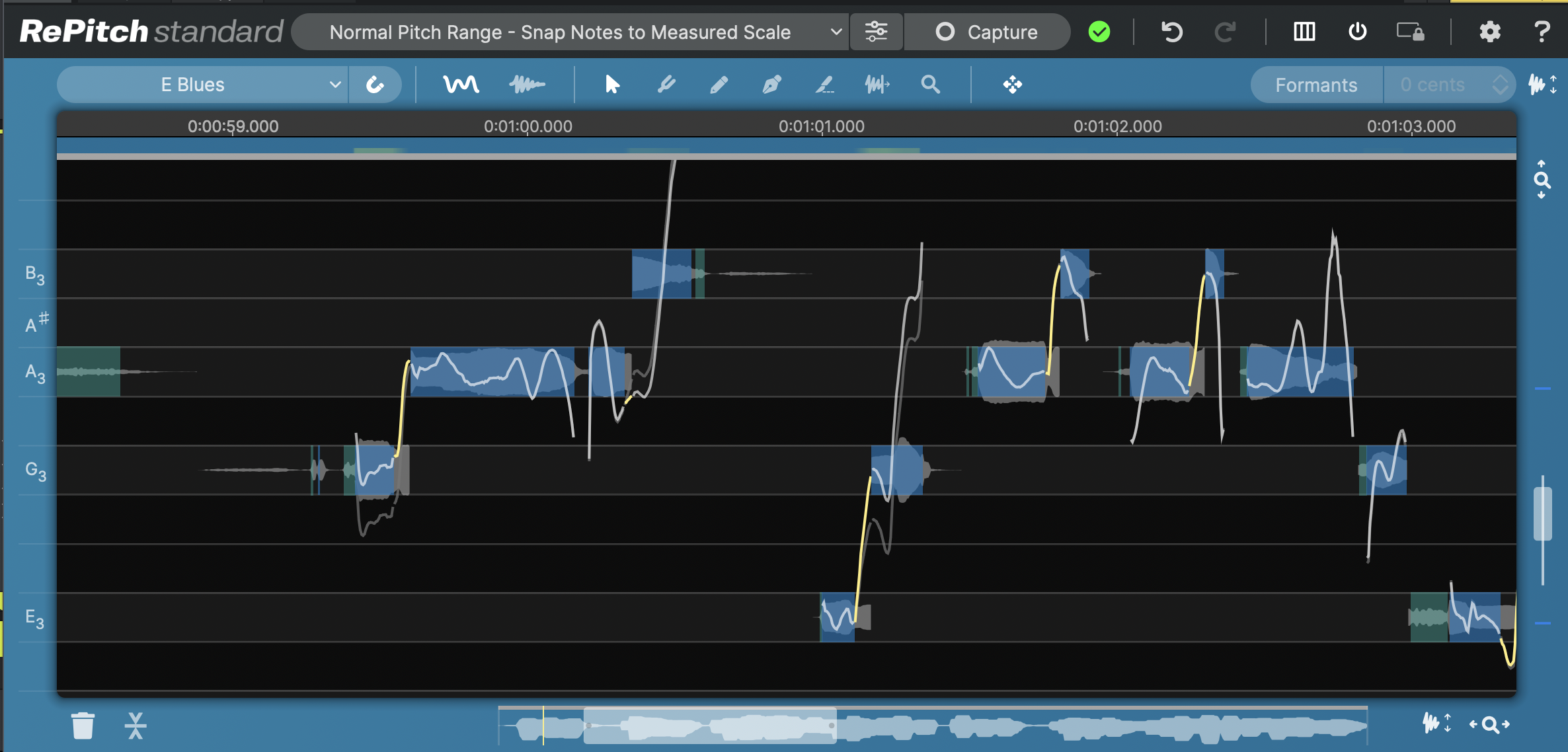
Other Useful Options
Snap Notes to Measured Scale
You could have also chosen the Macro below
Normal Pitch Range - Snap Notes to Measured Scale
This Macro would automatically detect the most likely tonic and scale from the notes in your audio track, and then move the detected note blocks in your audio to that Measured (i.e. detected) scale's note frequencies.
If you want to add your own Scale to be selected and tuned to, simply click the Scale display control shown below

and when this menu opens

Click Scales... and you'll see the window below
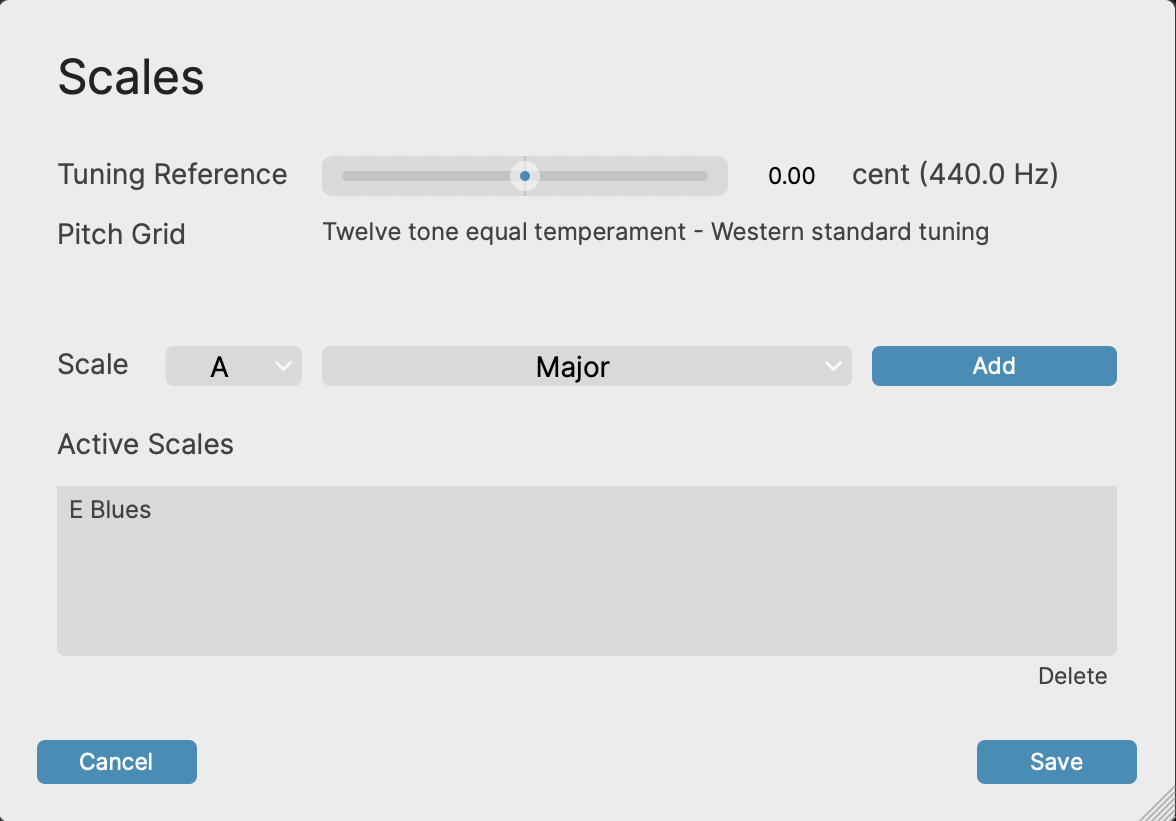
In the line that says Scale at the left, click the drop down menus to add your Tonic and Scale Mode and then click Add and then Save.
Your added scale should now be in the Scale window.
Now make sure the Macro is set to Snap Notes to Selected Scale and all further audio captures will use that scale and Macro automatically.
How to choose Manual Editing
Generally, you'll want to select one of two primary automatic tuning options above. However, the 'No Snapping Notes to Scale' macro shown below applies no automatic processing, leaving you free to make manual changes.

The controls for manual changes are discussed in detail in the Pitch Editing Tools and Time Modiciation Tools sections.
It's important to understand that once you've selected a Macro, you can change the Macro or Scale before you use it on the next captured audio or before you re-run the new Macro on the captured audio.
Switching Macros
If you have already run a Macro, switching to another Macro and running it by clicking "yes" in the window below will always discard all existing processing, so you will see the confirmation dialog below.
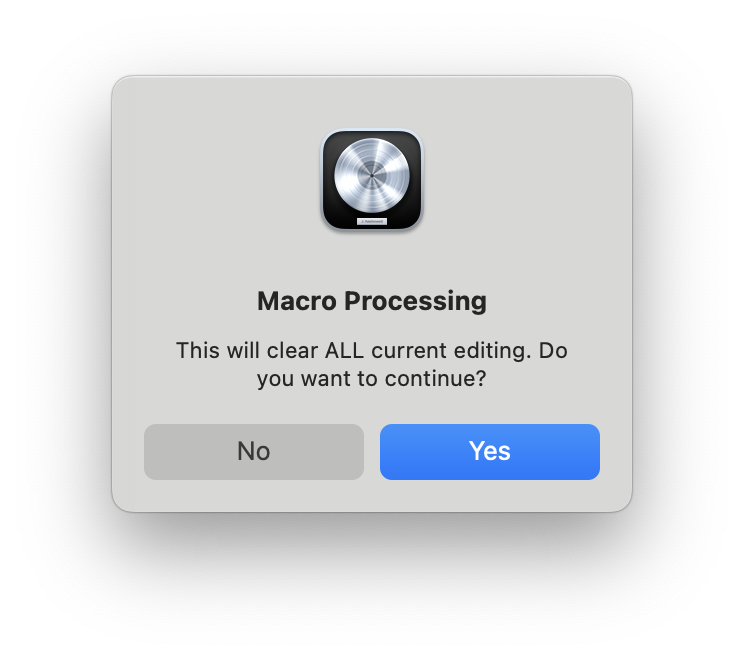
If you’ve not done any manual editing or want to start over, click YES.
If you click NO, you will see the changes made on screen, which will show the Scale and setting to be used in the next application of RePitch processing, whether with a Macro or Right Click menu.
Macros are described further in this section.
Rendering Your Audio
To render your audio, we will use Logic's Bounce In Place function. Right click your audio region and select 'Bounce In Place' from the menu as shown below.

This will open the Bounce In Place menu where you can select various options as needed. For more on this functionality, check Logic's documentation on the Bounce In Place function.
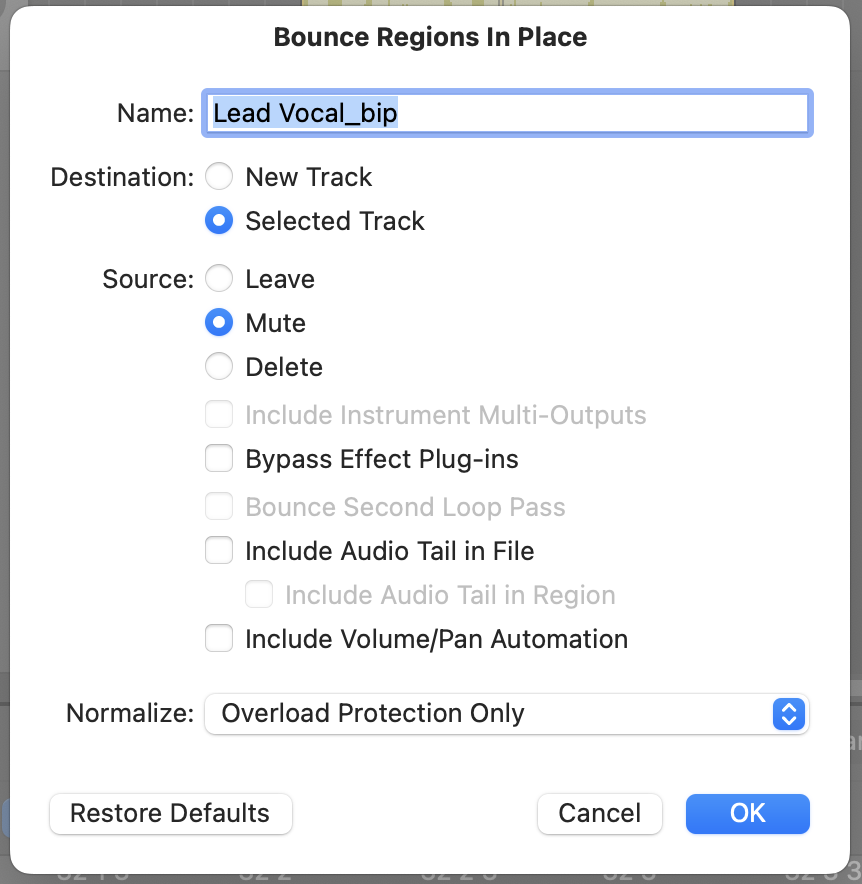
Copyright © 2023 by Synchro Arts Ltd All Rights Reserved.